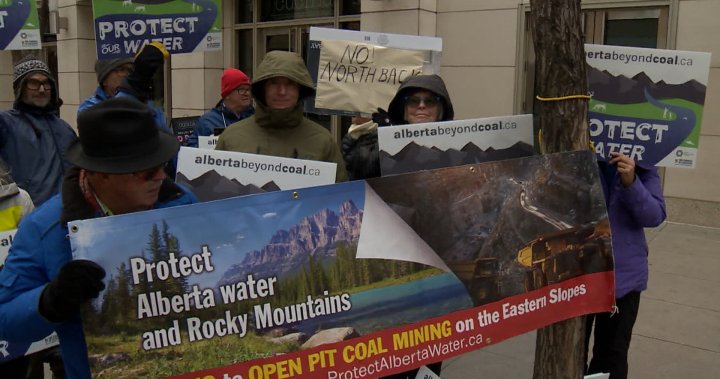Hurricane Helene: What made the ‘monster’ storm so bad, so fast? – National

Several communities have been levelled, more than 160 people are dead and hundreds more missing after hurricane Helene swept through various parts of the U.S. southeast.
And experts say there were several factors that made the “monster” storm so destructive, so fast.
The destructive potential of the storm had climatologists and meteorologists bracing before it even formed. Barry Keim, a health climatologist at Louisiana State University, told Global News forecasters expected something to form days before it even happened.
“For Helene, everything was pointing toward a major storm forming down there and tracking up to the Gulf of Mexico and turning it into the monster that it did,” Keim said.
Damaged to one of the White family’s homes that was destroyed by Hurricane Helene is seen, Tuesday, Oct. 1, 2024 in Morganton, N.C. The adjacent Catawba River flooded due to torrential rains destroying seven of the family’s nine homes on the property.
AP Photo/Kathy Kmonicek
He said one cause for this is the sea surface temperatures in that region, with near-record temperatures only surpassed by 2023, creating a “breeding ground” for a powerful storm.
Global News chief meteorologist Anthony Farnell said temperatures in that region were well above 30 C, something to which climate change has contributed, he notes.
“That is fuel for these storms and that’s one of the reasons why it intensified so rapidly,” he said.
After formation, the storm made its way north and saw a rapid intensification — when maximum sustained winds in the storm increased at least 30 miles per hour in a 24-hour period — to the point it grew from a Category 1 to Category 4 storm in less than a day.
The sea temperatures helped in fuelling that, but its landfall in Florida at that strength was also due to the low amount of wind shear being seen.

Keim said once a hurricane forms and rapidly intensifies, it has to remain in a favourable environment to sustain that, with wind shear potentially knocking away some of its wind and its strength. With Helene, that didn’t happen.
“This storm, Helene, actually just continued to build all the way until it hit the coastline,” Keim said. “It never really experienced any degradation, it just kept building and building and building all the way up until landfall coming in at that [Category] 4 strength.”
Florida’s Big Bend region saw a massive storm surge, ranging from six to 15 feet of water into island and coastal neighbourhoods along the state’s west coast.

Get breaking National news
For news impacting Canada and around the world, sign up for breaking news alerts delivered directly to you when they happen.
Even though the storm hit Florida’s Big Bend coast last Thursday with winds reaching 140 miles per hour, the storm was felt by many due to its size — about 350 miles or 560 km wide.
Then as the storm moved inland, Farnell said the storm was met by moisture brought by a weather system that brought more than a month’s worth of rain to the southeast U.S. before Helene even moved in.
Debris rests on a bridge in the aftermath of Hurricane Helene, Wednesday, Oct. 2, 2024, in Chimney Rock Village, N.C.
AP Photo/Mike Stewart
“So it was wringing out that moisture from the Atlantic, from the Gulf of Mexico, right over the Carolinas, right over Tennessee,” he said.
He added that when the storm hit the mountains, such as the Appalachians, parts of which are in North Carolina, the moisture goes uphill and as it rises in elevation, more moisture is wrung out.

That led to high rainfall, with more than 40 trillion gallons having drenched the region from both the hurricane and rainstorm and creating flood damage some meteorologists told the Associated Press was “apocalyptic.”
“All of that has to go somewhere so that water falls over a 48-hour period, but the disaster continues to unfold as you start losing highways and towns and that water eventually makes its way back to the ocean,” Farnell said.
How much did climate change contribute?
Scientists say climate change is helping some big hurricanes become wetter — and more intense as a result.
Plus, a warmer atmosphere can hold more water, fuelling intense rainstorms, although mountainous Appalachian terrain complicates the interaction between weather events and climate change, Jim Smith, a hydrologist at Princeton University, told The Associated Press.
When it came to Helene, Keim said what he noted about this storm is it hit the “big three” of hurricanes — wind, storm surge and rainfall — creating a storm that will be felt for months to come.
Business are seen in a debris field in the aftermath of Hurricane Helene, Wednesday, Oct. 2, 2024, in Chimney Rock Village, N.C.
AP Photo/Mike Stewart
While some like hurricane Harvey may see an immense amount of rainfall, or hurricane Katrina, which was known for its storm surge, Helene caused coastal impact from its surge, heavy winds inland and now high rainfall in the Carolinas.
“This storm had all three components and all three have inflicted pretty good damage,” he said.
— with files from The Associated Press
© 2024 Global News, a division of Corus Entertainment Inc.








